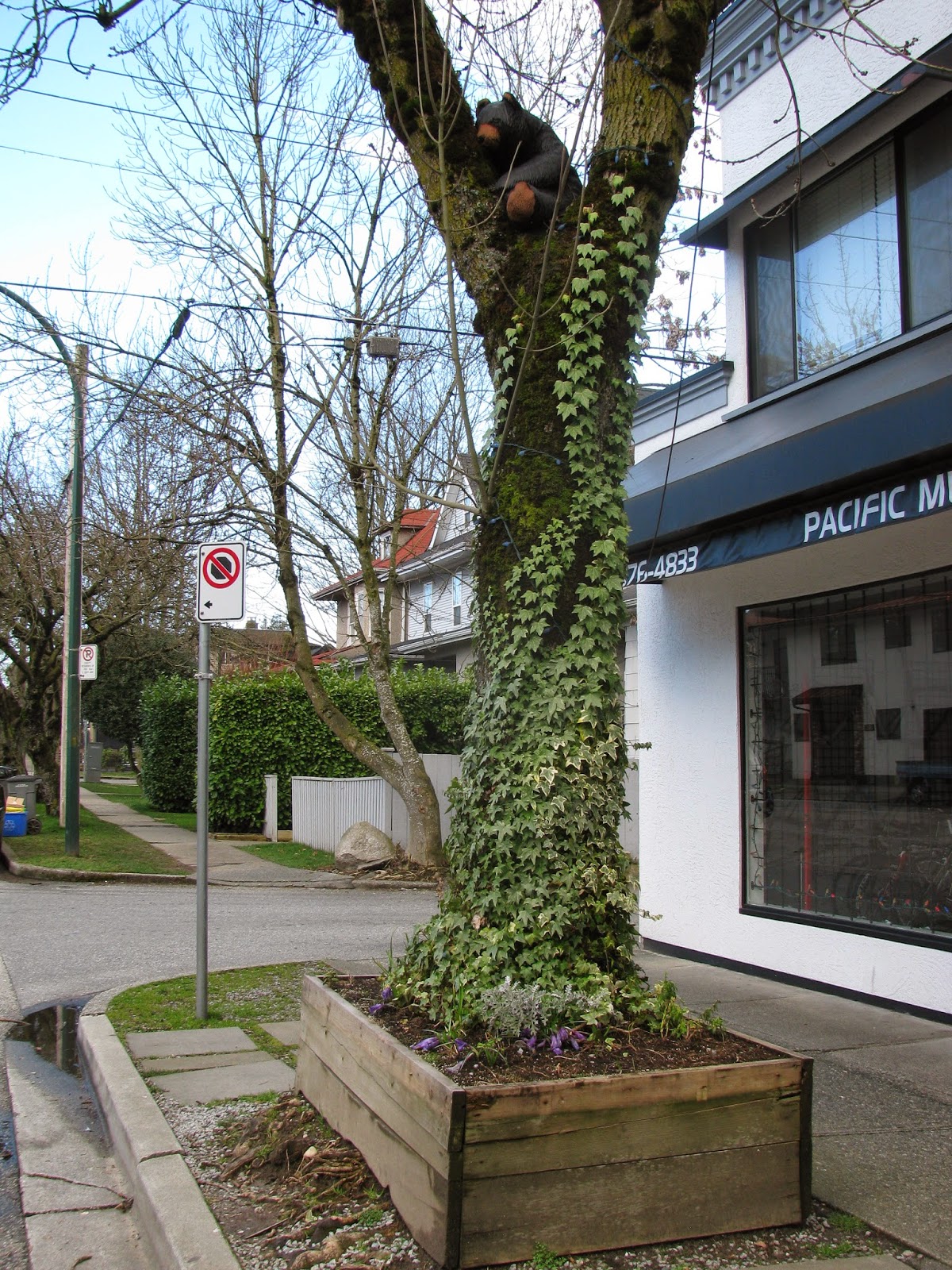I barely wince now when I go to the library and walk through the courtyard's unsavoury animal sculptures intended as "public art". For this, I can thank all my friends who read my earlier blog on the subject, courageously viewed the menagerie, and shared my gut response with comments like these:
- "I would never take my grandchildren to this library!"
- "If WE think these are scary, what impression do they make on a toddler or young child? This stuff belongs in a gallery or show, to be seen by choice. ...It doesn't belong in a library."
- "Shame on whoever did this."
- "Ooh...these ARE creepy."
With all this moral support, I was well fortified by late autumn 2013 when I arrived at the library one morning to find that the wisteria around the courtyard entrance had lost all its leaves revealing........oh, no! Two more distasteful sculptures that were previously (mercifully) hidden in the foliage.
There's an east-side Creepy Thing:
...and a west-side Creepy Thing:
What ARE these grotesqueries?? At first, I thought they were dugongs or manatees, or whatever marine animals are supposed to have inspired sailors' tales of mermaids. (Ha! Tell that to Hans Christian Andersen.) But on second (painful) glance, these creatures seem to have fur and claws, not scales and fins. Let's not speculate any further.
I've tried to be fair to this sculptor. Maybe his off-base series follows a little-known tradition in public art -- an idea suggested to me by a fascinating book I read recently. THE PROUD POSSESSORS, by Aline B. Saarinen (wife of the famous architect), recounts the experiences of famous (and not so) American arts philanthropists and recaps the beginnings of famous art collections in the US. She writes:
When the Philadelphian William P. Willstach made so substantial a fortune from selling saddlery hardware that in 1858, at the age of 48, he found himself in a position to retire, it seemed completely natural to spend the rest of his life collecting fashionable contemporary art to go into his fashionable contemporary house. If art in the home carried intimations of the cultural elevation of the owner, with equal logic ,art in the city would make Philadelphia "the Athens of America." This was the stated goal of the gentlemen who, in 1871, organized the Fairmount Park Art Association, the first group in America dedicated to adorning public parks and places with statuary. Their up-to-date taste led them to a Dying Lioness, Hudson Bay Wolves, and slightly constipated-looking marble figure called "Il Penseroso." (- The Proud Possessors, Aline B. Saarinen)
Dying lioness? Hmmm, sounds rather like our local sculptor's anorexic feline.
Ugh. So let's leave all this and travel eastward about ten blocks where.........meanwhile, in another part of the forest, an unsung, unpaid, truly philanthropic artisan has installed an unofficial but delightful work of art:
If those green scales suggest an alligator, it can only be a very harmless alligator enjoying the pleasure of hanging out with the most engaging bear in east Vancouver. The local public along this modest side street applauds this one!







That's wonderful! 'Love the bear!
ReplyDelete